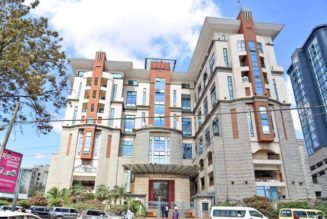Data Hub
Kenya’s missed satellite technology opportunity
Tuesday February 07 2023
A swarm of desert locust in Meru, on February 9, 2021. PHOTO | AFP
Between 2019 and 2021, Kenya experienced one of the worst infestations of the desert locusts, an addition to the then-biting Covid-19 scourge that was first reported in the country in 2020 March.
The World Bank reported that the desert locusts outbreak in Kenya was the worst ever experienced in 70 years. The swarms did not only affect Kenya but Ethiopia, India and Yemen.
Interestingly the locusts stayed for a long time without the government ever finding ways of eradicating them.
The most that was ever done was the prediction of the paths of the swarm’s migration, causing havoc in various counties’ agricultural output.
Hypothetically, it is even worth stating that together with the adverse effects of climate change, part of the hunger experienced in about 15 counties could have contributed to by the locust invasion.
Alvin Alexander president and founder of Orion Applied Science and Technology, an American aerospace exploration company now sees an opportunity to invest in satellite technology in the country and train young Kenyans in getting tech skills for space exploration, to avert such occurrences in the future.
But that is not all, the satellite technology potential is huge.
Having over a decade of experience running, Orion AST seeks to develop and establish an orbital architecture of advanced satellites, designed to transform near-Earth space operations and applications; develop and establish a ground architecture to support both orbital and terrestrial remote sensing and communications.
This technology will extensively bridge global solutions across multiple market segments.
Orion’s interest in the Kenyan market is further motivated by the government’s push for public-private partnerships which Alvin says is a key component of easing business in the country and attracting foreign direct investments.
“We want to provide global customers in government and industry access to high fidelity data, service and secure communications across a minimum of 12 verticals, leveraging a proprietary end-to-end space-based system architecture for varied applications, in both terrestrial and non-earth imaging operations,” Alvin told the Business Daily.
Read: New wave of locust invasion looms in the north
A satellite nanosat technology unit consists of small 80kg satellites, small launch vehicles capable of placing 160kg payload into orbit, and state-of-the-art software-driven analytics.
Nanosats can be used to view both orbital and terrestrial features, above and upon the Earth, using ultra-high-resolution sensors and optics.
As an example of application, data received through the satellite will help in predicting and informing the public about locust migration, giving farmers a heads up about the presence of locusts before they even arrive.
The nanosats can be giving farmers the capacity to engage with space technology to improve their commercial agricultural practice.
Aero spatial exploration can be employed in an array of ways that range from wildlife and tourism, natural resources management, disaster management, military and defence and many more.
For example, the most common disasters are fire breakouts in forest and game reserves. Presently, there is no central provider for emergency services that can organise and coordinate a response to a natural disaster at the global level.
Additionally, there are no dedicated services that integrate satellites as part of an emergency services programme. Employment of satellite technology can avert any risks attached to such eventualities.
His other big motivation comes from the need to assist in mitigating climate change.
Orion also seeks to partner with universities to train and conduct research with science and technology students in space exploration.
Fortunately, if all factors remain constant they would use the already existing efforts by some former Kenyatta Universities students’ innovations of nanosats as a launch pad.
Students’ interests were fueled by Sh1 million grants provided to them by the Kenya Space Agency in 2021 after successful submissions of proposals dubbed “Operational Space Weather and Nano-satellite Development”.
Kenya Space Agency is a State Corporation that is charged with promoting, coordinating and regulating Space related activities in Kenya.
The grant was to be utilised in developing a nano-satellite prototype for imagery, telemetry and drones for agricultural use and disaster management in the country.
Read: High alert as fresh wave of locust invasion looms
Also, if fully explored, the satellite technology can be a revenue generator for Kenya as it will attract clients who need mapping data as exists in Google Maps and other related technologies.









